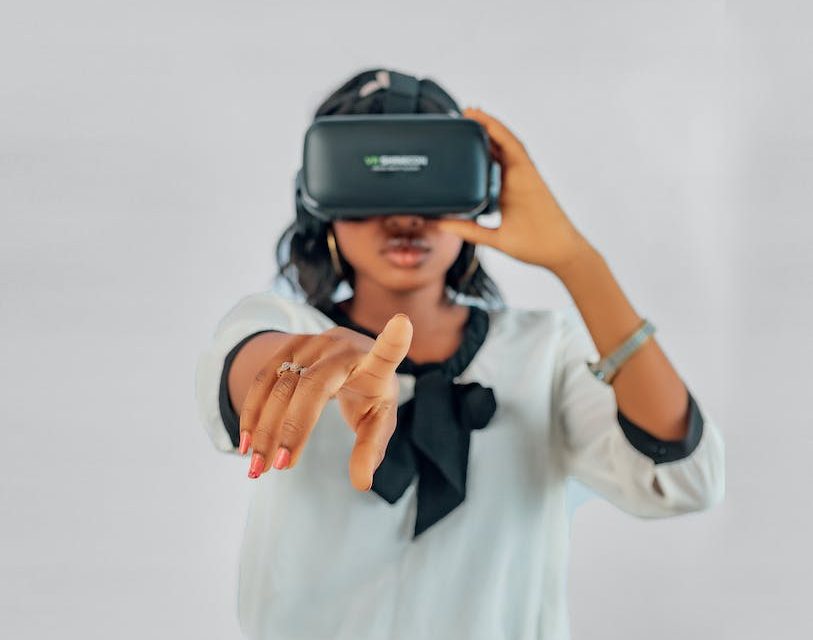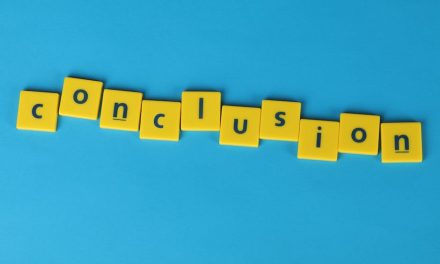Table of Contents
Unlocking Potential through Multiple Intelligences: Revolutionizing Learning Styles
Introduction
Understanding Multiple Intelligences: A New Approach to Learning Styles
In traditional education, intelligence has often been measured and assessed through a narrow lens, focusing primarily on linguistic and logical-mathematical abilities. However, Howard Gardner, a renowned psychologist and educator, proposed a groundbreaking theory of multiple intelligences, suggesting that intelligence is not a singular entity but rather a diverse range of abilities that individuals possess. This theory has revolutionized the way we understand learning styles, emphasizing the importance of recognizing and nurturing various intelligences in education. By acknowledging and catering to these different intelligences, educators can create a more inclusive and effective learning environment that caters to the diverse needs and strengths of students. In this article, we will explore the concept of multiple intelligences and its implications for teaching and learning.
The Theory of Multiple Intelligences: An Overview

Understanding Multiple Intelligences: A New Approach to Learning Styles
The Theory of Multiple Intelligences: An Overview
In the field of education, the concept of learning styles has long been a topic of interest. Traditionally, learning styles have been categorized into three main types: visual, auditory, and kinesthetic. However, a groundbreaking theory introduced by Howard Gardner in the 1980s challenged this notion and proposed a new approach to understanding how individuals learn. This theory, known as the theory of multiple intelligences, suggests that there are not just three, but rather multiple types of intelligence that influence how we process information and learn.
According to Gardner, intelligence is not a singular entity that can be measured by a single test or assessment. Instead, he argues that there are at least eight different intelligences that individuals possess to varying degrees. These intelligences include linguistic, logical-mathematical, spatial, bodily-kinesthetic, musical, interpersonal, intrapersonal, and naturalistic intelligence.
Linguistic intelligence refers to the ability to use language effectively, both in written and spoken forms. Individuals with high linguistic intelligence excel in activities such as reading, writing, and public speaking. Logical-mathematical intelligence, on the other hand, involves the ability to think logically and solve complex problems. People with this intelligence are often skilled in mathematics, logic, and scientific reasoning.
Spatial intelligence relates to the ability to perceive and manipulate visual-spatial information. Those with high spatial intelligence are often talented in fields such as architecture, design, and art. Bodily-kinesthetic intelligence, as the name suggests, involves the ability to control one’s body movements and handle objects skillfully. Athletes, dancers, and surgeons are examples of individuals who possess high bodily-kinesthetic intelligence.
Musical intelligence refers to the ability to understand and create music. People with this intelligence have a keen sense of rhythm, melody, and pitch. Interpersonal intelligence, on the other hand, involves the ability to understand and interact effectively with others. Individuals with high interpersonal intelligence are often skilled in areas such as leadership, communication, and empathy.
Intrapersonal intelligence relates to self-awareness and understanding one’s own emotions, strengths, and weaknesses. Those with high intrapersonal intelligence are often reflective and have a deep understanding of themselves. Lastly, naturalistic intelligence refers to the ability to recognize and categorize patterns in nature. People with this intelligence have a strong connection to the natural world and are often skilled in fields such as botany, zoology, or environmental science.
It is important to note that these intelligences are not mutually exclusive, and individuals can possess varying degrees of each intelligence. Furthermore, Gardner’s theory suggests that everyone has a unique combination of these intelligences, which explains why individuals have different strengths and weaknesses in various areas.
Understanding the theory of multiple intelligences has significant implications for education. By recognizing and valuing the diverse intelligences that students possess, educators can design instructional strategies that cater to individual strengths and preferences. This approach promotes a more inclusive and personalized learning environment, where students can thrive and reach their full potential.
In conclusion, the theory of multiple intelligences challenges the traditional notion of learning styles and offers a more comprehensive understanding of how individuals learn. By recognizing the various intelligences that individuals possess, educators can create a more inclusive and personalized learning environment. This approach not only enhances student engagement and motivation but also allows for a more holistic development of individuals’ unique talents and abilities.
How to Identify and Nurture Different Intelligences in Students
Understanding Multiple Intelligences: A New Approach to Learning Styles
In the field of education, it is widely recognized that students have different learning styles. While traditional approaches have focused on visual, auditory, and kinesthetic learning, a new perspective has emerged that takes into account the concept of multiple intelligences. This approach suggests that individuals possess a range of intelligences, each with its own unique set of abilities and potential for growth. By identifying and nurturing these different intelligences in students, educators can create a more inclusive and effective learning environment.
The theory of multiple intelligences was first proposed by psychologist Howard Gardner in 1983. According to Gardner, intelligence is not a single, fixed entity, but rather a combination of various abilities that can be developed and enhanced. He identified eight different intelligences: linguistic, logical-mathematical, spatial, bodily-kinesthetic, musical, interpersonal, intrapersonal, and naturalistic. Each intelligence represents a different way of processing information and understanding the world.
Identifying the different intelligences in students can be a challenging task. One way to do this is through observation and assessment. By observing how students engage with different activities and subjects, educators can gain insights into their strengths and preferences. Additionally, formal assessments, such as questionnaires or interviews, can provide further information about a student’s intelligences. It is important to note that these assessments should be used as a starting point for understanding a student’s profile of intelligences, rather than as definitive labels.
Once the different intelligences have been identified, it is crucial to nurture and develop them in the classroom. This can be done through a variety of strategies and activities that cater to the specific strengths of each intelligence. For example, students with linguistic intelligence may benefit from reading and writing activities, while those with bodily-kinesthetic intelligence may thrive in hands-on, experiential learning environments. By providing a range of learning opportunities, educators can create a more inclusive and engaging classroom that meets the diverse needs of students.
In addition to individualized instruction, collaborative learning can also play a significant role in nurturing different intelligences. By working in groups, students have the opportunity to interact with their peers and learn from each other’s strengths. For example, a student with strong interpersonal intelligence can contribute to group discussions and help facilitate communication, while a student with logical-mathematical intelligence can provide analytical insights. Collaborative learning not only enhances the development of different intelligences but also promotes important social and communication skills.
Furthermore, integrating technology into the classroom can be a powerful tool for nurturing different intelligences. With the advent of digital resources and online platforms, educators can provide students with a wide range of interactive and multimedia learning experiences. For example, students with spatial intelligence can explore virtual simulations and 3D models, while those with musical intelligence can create and compose music using digital tools. By leveraging technology, educators can tap into the potential of different intelligences and create dynamic and engaging learning environments.
In conclusion, understanding and nurturing different intelligences in students is a valuable approach to promoting inclusive and effective learning. By identifying the various intelligences through observation and assessment, educators can tailor instruction to meet the unique needs and strengths of each student. Through individualized instruction, collaborative learning, and the integration of technology, educators can create a classroom environment that fosters the growth and development of multiple intelligences. By embracing this new approach to learning styles, educators can empower students to reach their full potential and become lifelong learners.
Applying Multiple Intelligences in the Classroom: Practical Strategies
Understanding Multiple Intelligences: A New Approach to Learning Styles
Applying Multiple Intelligences in the Classroom: Practical Strategies
In recent years, educators have recognized the limitations of traditional learning styles and have turned to a new approach known as multiple intelligences. This approach, developed by Howard Gardner, suggests that intelligence is not a single entity but rather a combination of different abilities. By understanding and applying multiple intelligences in the classroom, teachers can create a more inclusive and effective learning environment for all students.
One practical strategy for applying multiple intelligences in the classroom is to incorporate a variety of activities that cater to different intelligences. For example, a lesson on the solar system could include a visual component, such as a poster or a video, for students who are strong in visual-spatial intelligence. At the same time, it could also include a hands-on activity, such as building a model of the solar system, for students who excel in bodily-kinesthetic intelligence. By providing opportunities for students to engage with the material in different ways, teachers can tap into their individual strengths and enhance their learning experience.
Another strategy is to encourage collaboration and group work. This allows students to leverage their interpersonal intelligence by working together and learning from one another. Group projects, discussions, and debates can provide a platform for students to share their ideas, perspectives, and knowledge. By fostering a collaborative learning environment, teachers can help students develop their interpersonal skills while also deepening their understanding of the subject matter.
Furthermore, teachers can incorporate technology into their lessons to cater to students with strong logical-mathematical intelligence. Online simulations, interactive games, and virtual experiments can provide a hands-on and engaging learning experience for these students. Additionally, technology can also be used to support students with linguistic intelligence by providing access to a wide range of reading materials, audio recordings, and online discussions. By integrating technology into the classroom, teachers can create a dynamic and interactive learning environment that caters to the diverse intelligences of their students.
In addition to these strategies, it is important for teachers to provide opportunities for students to reflect on their learning and showcase their achievements. This can be done through self-assessment activities, portfolios, or presentations. By allowing students to reflect on their strengths and weaknesses, teachers can help them develop their intrapersonal intelligence and become more self-aware learners. Moreover, providing opportunities for students to showcase their achievements can boost their self-confidence and motivation, leading to a more positive and productive learning experience.
In conclusion, applying multiple intelligences in the classroom is a practical and effective approach to cater to the diverse learning styles of students. By incorporating a variety of activities, encouraging collaboration, leveraging technology, and providing opportunities for reflection and self-assessment, teachers can create a more inclusive and engaging learning environment. This approach not only enhances students’ understanding and retention of the material but also fosters the development of their individual strengths and intelligences. As educators continue to explore and implement multiple intelligences in their teaching practices, they are paving the way for a more personalized and effective education system.
The Benefits of Embracing Multiple Intelligences in Education
Understanding Multiple Intelligences: A New Approach to Learning Styles
The Benefits of Embracing Multiple Intelligences in Education
In the field of education, there has been a growing recognition that students have different ways of learning and processing information. Traditional teaching methods often focus on a narrow range of intelligences, such as linguistic and logical-mathematical abilities. However, the theory of multiple intelligences, proposed by Howard Gardner, suggests that there are actually several distinct types of intelligence that individuals possess. By embracing this new approach to learning styles, educators can tap into the diverse strengths of their students and create a more inclusive and effective learning environment.
One of the key benefits of embracing multiple intelligences in education is that it allows for a more personalized approach to teaching. Instead of expecting all students to excel in the same areas, educators can recognize and nurture the unique talents and abilities of each individual. For example, a student who excels in music may struggle in traditional academic subjects. By incorporating music into their lessons, teachers can engage this student in a way that is meaningful and relevant to their strengths. This personalized approach not only enhances the student’s learning experience but also boosts their self-confidence and motivation.
Furthermore, embracing multiple intelligences in education promotes a more holistic understanding of intelligence. Traditional teaching methods often prioritize linguistic and logical-mathematical abilities, leaving little room for other forms of intelligence, such as spatial, bodily-kinesthetic, or interpersonal intelligence. By recognizing and valuing these different types of intelligence, educators can create a more inclusive learning environment that caters to the diverse strengths and talents of all students. This not only fosters a sense of belonging and acceptance but also encourages students to explore and develop their unique abilities.
Another benefit of embracing multiple intelligences in education is that it promotes critical thinking and problem-solving skills. By incorporating a variety of teaching methods that cater to different intelligences, educators can challenge students to think creatively and approach problems from multiple perspectives. For example, a science lesson can be enhanced by incorporating hands-on experiments for students with bodily-kinesthetic intelligence, visual aids for students with spatial intelligence, and group discussions for students with interpersonal intelligence. This multidimensional approach not only deepens students’ understanding of the subject matter but also enhances their ability to think critically and solve complex problems.
Moreover, embracing multiple intelligences in education fosters a more positive and inclusive classroom culture. By valuing and celebrating the diverse strengths and talents of all students, educators can create an environment that promotes respect, empathy, and collaboration. Students learn to appreciate and learn from each other’s unique perspectives, fostering a sense of community and mutual support. This inclusive classroom culture not only enhances students’ social and emotional development but also prepares them for the diverse and interconnected world they will encounter outside of school.
In conclusion, embracing multiple intelligences in education offers numerous benefits for both students and educators. By recognizing and nurturing the diverse strengths and talents of students, educators can create a more personalized and inclusive learning environment. This approach promotes critical thinking, problem-solving skills, and a positive classroom culture. As we continue to understand the complexities of human intelligence, it is crucial that we adapt our teaching methods to accommodate the diverse learning styles and abilities of our students. By embracing multiple intelligences, we can unlock the full potential of every learner and create a more equitable and effective education system.
Q&A
1. What is the concept of multiple intelligences?
Multiple intelligences is a theory that suggests individuals possess different types of intelligence, including linguistic, logical-mathematical, spatial, bodily-kinesthetic, musical, interpersonal, intrapersonal, and naturalistic intelligence.
2. Who developed the theory of multiple intelligences?
The theory of multiple intelligences was developed by Howard Gardner, a psychologist and professor at Harvard University.
3. How does the theory of multiple intelligences impact learning styles?
The theory suggests that individuals have different strengths and preferences in how they learn and process information. Understanding these different intelligences can help educators tailor teaching methods to better suit individual students’ learning styles.
4. What are the implications of multiple intelligences for education?
The theory of multiple intelligences emphasizes the importance of recognizing and nurturing diverse talents and abilities in education. It encourages educators to provide a variety of learning experiences and assessments to accommodate different intelligences and promote holistic development.
Conclusion
Understanding multiple intelligences offers a new approach to learning styles. This concept suggests that individuals possess different types of intelligence, such as linguistic, logical-mathematical, spatial, bodily-kinesthetic, musical, interpersonal, intrapersonal, and naturalistic intelligence. By recognizing and catering to these diverse intelligences, educators can create a more inclusive and effective learning environment. This approach acknowledges that traditional teaching methods may not suit every student, and encourages educators to adapt their instructional strategies to accommodate various learning styles. By embracing multiple intelligences, educators can foster a more holistic and personalized approach to education, ultimately enhancing students’ overall learning experiences and outcomes.





